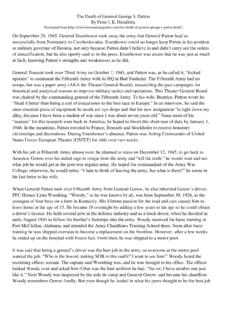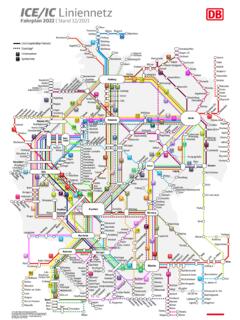Transcription of Contraindications to magnetic resonance imaging
1 2008;94;943-948 Heart T Dill Contraindications to magnetic resonance imaging information and services can be found at: These include:Data supplement "web only appendix" References #otherarticles1 online articles that cite this article can be accessed at: #BIBLThis article cites 23 articles, 9 of which can be accessed free at: Rapid responses can respond to this article at: serviceEmail alertingthe top right corner of the article Receive free email alerts when new articles cite this article - sign up in the box atTopic collections (4597 articles) Epidemiology (22273 articles) Drugs: cardiovascular system (18476 articles) Clinical diagnostic tests Articles on similar topics can be found in the following collections Notes order reprints of this article go to: go to: HeartTo subscribe to on 8 November 2009 from NON-INVASIVE IMAGINGC ontraindications to magneticresonance imagingT DillcAdditional references arepublished online only at of Cardiology/Cardiovascular imaging ,Kerckhoff Heart Center, BadNauheim, GermanyCorrespondence to:Thorsten Dill, MD, Departmentof Cardiology/CardiovascularImaging, Kerckhoff Heart Center,Benekestrasse 2-8, 61231 BadNauheim, Germany.
2 resonance imaging (MRI) is a methodthat has evolved continuously during the past20 years, yielding MR systems with stronger staticmagnetic fields, faster and stronger gradientmagnetic fields, and more powerful radiofrequencytransmission coils. It is increasingly being used andrequested as several new indications have beenestablished during the last few years for example,cardiovascular evaluate the Contraindications to MRI isequivalent to understanding the safety issuessurrounding the use is often described as a safe modality dueto the fact that, unlikexray based systems,ionising radiation is not involved. However, thereare hazards intrinsic to the MR environment thatmust be acknowledged and excluded.
3 Mostreported cases of MR related injuries and the fewfatalities that have occurred have apparently beenthe result of failure to follow safety guidelines orhave resulted from the use of inappropriate oroutdated information related to the safety aspectsof biomedical implants and devices. Therefore, forinformation on specific guidelines and devices,detailed sources of safety information for exam-ple, dedicated websites (box 1) are w2 Risks associated with MRI may be attributed toone or to a combination of the three mainmechanisms of the static magnetic fields As a result offerromagnetic interactions, an object or devicemay be moved, rotated, dislodged, or acceler-ated toward the magnet.
4 The projectileeffect means that, depending on the type ofmagnet and the intensity of the generatedfield, to varying extent, objects are attracted tothe centre of the magnet (for example, heliumor oxygen cylinders, ventilators, wheelchair,etc), possibly causing severe injuries anddamage. Furthermore, articles such as metallicsplinters, vascular clips, and cochlear implantsmay be dislodged. The strong magnetic fieldmay also affect device function, as most, butimportantly not all, currently implanteddevices are either non-ferromagnetic or gradient magnetic fields Gradients aretime-varying magnetic fields used to encodefor various aspects of the image are much weaker than the main mag-netic field.
5 As they are repeatedly and rapidlyturned on and off the rapid changing magneticfields can induce electrical currents in electri-cally conductive devices and may directly causeneuromuscular radiofrequency fields The main biologi-cal effects of radiofrequency fields is theirthermogenic effect. Some of the applied energywill be absorbed by the body and convertedinto heat. The specific absorption rate (SAR,expressed in watts/kilogram) increases withthe square of the field strength and varies withdifferent sequences. Metallic devices (for exam-ple, pacer leads) can concentrate radiofre-quency energy which leads to local energy can also induce elec-trical currents in wires and leads which mightinduce US Food and Drug Administration (FDA)has approved brief exposure to magnetic fields atall of the intensities currently in use for clinicalpurposes (from to Tesla (T), and even up to8 T for research) on the grounds that is notharmful to the body, but this is only true forpatients in general.
6 Patients with cardiovasculardevices, in particular, have to be evaluated , another potential hazard has comeinto the focus, namely, nephrogenic systemicfibrosis attributed to the administration of gado-linium based MR contrast agents in patients withrenal increasing numbers of cardiovascular MRIundertaken for ischaemia testing using eitheradenosine or dobutamine for pharmacologicalstress, Contraindications to the administration ofthese substances have to be taken into screening before an MR examination ismost effective to prevent adverse , a checklist with possible contraindica-tions appears to be useful. An example of such achecklist is given in box article will summarise current recommen-dations on safety and resulting contraindicationsfor IMPLANTSV ascular clipsIf a clip is made of non-ferromagnetic material andif there are no concerns with MR associatedheating, a patient may undergo MR immediatelyafter endocranial clips, a writtencertification from the neurosurgeon is required7;ifEducation in HeartHeart2008;94:943 948.
7 On 8 November 2009 from the clip is made of titanium or titanium alloy, theexamination can be w5 However, ifthe clip is declared to be ferromagnetic or other-wise incompatible with MR, the examination mustbe cancelled. In general, MR compatible materialshave been increasingly used since the mid 1990s, sothe risk of incompatibility is quite low but needs tobe bodiesThe potential danger of a metal foreign body forexample, a metallic splinter in the eye has beenreported since MR was first introduced for there is any doubt about the presenceor location anxray should be taken before the same holds true for bullets or grenade w8 Shifting of metal foreign bodies under theinfluence of the magnetic field could damage vitalstructures for example, vessels or nerves.
8 It is anindividual decision if the risk of an MR examinationis outweighed by the benefit of an sutures are made of various metallic andnon-metallic materials and sometimes induce arte-facts. The most widely used types in clinical practicehave been tested at magnetic fields of T and 3 Tand were found to be safe for and peripheral artery stentsMost coronary artery and peripheral vascular stentsare made of stainless steel or nitinol. Some stentsmay be composed of, or contain, variable amounts ofplatinum, cobalt alloy, gold, tantalum, MP35N, orother means most coronary andperipheral vascular stents are non-ferromagnetic orweakly ferromagnetic. Extensive studies have led tothe conclusion that MR scanning of patients afterstent implantation can be performed without risk atany time at 3 T or is no risk ofdislodgement as implantation against the vessel wallprovides sufficient stability and no increased risk foracute stent thrombosis (for bare metal stents as wellas drug eluting stents (DES).)
9 9w10 w11 The effect ofheating induced by the radiofrequency field on thepolymer of DES is unknown. However, stentsgenerally cause artefacts that impair evaluation ofthe stent stent graftsThe majority of endovascular aortic stent grafts arenon-ferromagnetic or weak ferromagnetic and maybe scanned immediately after implantation at 3 Tor less. It is important to mention that there areexceptions8and scanning cannot be recommendedfor three particular stent heart valves and annuloplasty ringsAlthough prosthetic heart valves and annuloplastyrings are made from a variety of materials,numerous studies have demonstrated that MRIexaminations are safe.
10 Even mechanical heartvalves that are composed of a variety of metalsare not a contraindication for MR imaging at 3 Tor less any time after on the amount of metal contained,there are some minor interactions with themagnetic field, but the resulting forces are muchless compared to those of the beating heart andpulsatile blood wires are usually made of stainless steelor alloy and are not a contraindication to occluder devicesDevices for closure of persistent foramen ovale,atrial septal defect or left atrial appendage areusually made of non-ferromagnetic material (tita-nium, nitinol), the few made of stainless steelbeing weakly ferromagnetic.




